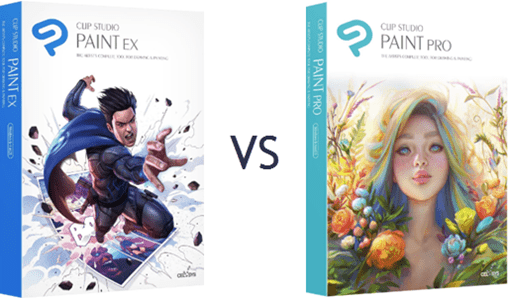
Are you looking for the best acrylic paint thinner to help thin down and dilute your paints?
Acrylic paint is a versatile medium that can be used in many different ways. But sometimes it needs to be diluted or thinned out, which requires an acrylic paint thinner. With the right product, you can create beautiful works of art with ease.
You don’t have to worry about wasting time trying out different products or spending money on something that won’t work.
We have done all the research for you and found the best acrylic paint thinners available on the market today.
Read our guide now to learn more about how to dilute and thin down your paints with these amazing products.
What Can You Use to Thin Acrylic Paint?
When thinning acrylic paint, it is important to understand the type of finish you want to achieve.
Generally, water is used to achieve a more watercolor-like effect with soft edges and subtle color transitions. This requires careful control of the amount of water added; too much will create undesired drips and runs.
When using water for thinning, the best way to control it is by using a spray bottle.
For a more glossy and vivid finish, an acrylic medium can be used to thin acrylic paint without losing its opacity and vibrancy.
Various types of acrylic mediums can achieve different results, such as glazing mediums, paint flow improvers, extenders, and airbrush mediums.
If you are unsure of the type of medium to use, refer to the manufacturer's instructions for guidance.
Which Are the Best Acrylic Paint Thinners?
Here are our team's top picks for the best acrylic paint thinner:
- Best Thinner for Acrylic Paint: VALLEJO Airbrush Paint Thinner
- Best Acrylic Pouring Medium for Thinning Paint: LIQUITEX Professional Pouring Effects Medium
- Best DIY Acrylic Thinner: VALLEJO Thinner Medium (17 ml)
- Best Acrylic Paint Thinner with Brush & Accessories Cleaner: Mona Lisa Odorless Paint Thinner
- Best Binder for Acrylic Paint: PEBEO STUDIO Acrylic Binder (Transparent)
As an Amazon Associate, there may be small earnings from qualifying purchases at no additional cost to you!
Best Thinner for Acrylic Paint
1. VALLEJO Airbrush Paint Thinner
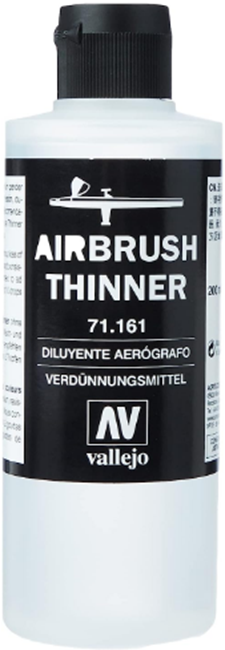
Key Features:
- Weight – 7 Ounces.
- Included Components – Paint & Hobby.
- Form – Liquid.
- Outdoor/Indoor Usage – Indoor.
- Surface Recommendation – Plastic.
- Specific Uses – Dry Sanding.
- Paint Type – Acrylic.
- Special Feature – Dishwasher Safe.
- Item Volume – 200 ml.
- Finish Type – Gloss.
- Color – Airbrush Thinner.
Overview:
Are you looking for a reliable paint thinner?
Look no further than VALLEJO Airbrush Paint Thinner. It is ideal for Liquid Acrylic paints and Model Air, diluting without loss of durability, color adhesion, or consistency.
It also comes in a 200ml plastic bottle so you can easily store and transport it.
With this paint thinner, you can achieve the perfect thinning ratio every time. You won’t have to worry about your colors fading or losing their vibrancy as they dry – this product ensures that your work will look just as vibrant when finished as when you started painting.
User Experience:
The user experience of the VALLEJO Airbrush Paint Thinner is overwhelmingly positive.
Users note that the dilution of paint with this product is easy and straightforward, allowing them to achieve their desired consistency quickly and accurately.
Additionally, users appreciate the price of the product, which is reasonably contained, although a little high compared to homemade recipes.
The bottle itself is also liked, as it comes with a secure cork closure and a pouring spout that makes it easy to measure out the desired amount.
In short, VALLEJO Airbrush Paint Thinner is ideal for those looking for an efficient and straightforward product for thinning paint in their airbrushing projects.
From the reviews of customers, this product has been proven to be an invaluable tool in the arsenal of any aspiring or professional airbrush painter.
Pros
- Price contained.
- Easy Dilution.
- Big bottle.
- Tight cork closure for storage.
Cons
- Unperfected pouring spout system.
Overall Thoughts:
In a nutshell, the VALLEJO Airbrush Paint Thinner is an excellent solution for thinning acrylic colors for airbrushing.
It's convenient and easy to use and the price is rather reasonable compared to some other alternatives.
The bottle has a well-sealed cap that prevents accidental spillage or leakage, and it's easy to measure the desired amount of thinning agent.
All in all, it's an excellent choice for airbrushing projects and we highly recommend it.
Get started with the VALLEJO Airbrush Paint Thinner.
Best Pouring Medium for Thinning Acrylic Paint
2. LIQUITEX Professional Pouring Effects Medium
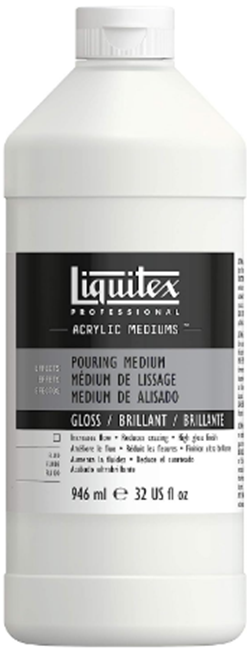
Key Features:
- Color – Gloss.
- Paint Type – Acrylic.
- Form – Liquid.
- Surface Recommendation – Acrylic.
- Specific Uses – Interior.
- Volume – 32 Fluid Ounces.
- Finish Type – Gloss.
Overview:
Are you an artist in need of a new medium to add to your acrylic paint?
Look no further than Liquitex Professional Pouring Effects Medium. This fluid medium incorporates an acrylic polymer with high resin solids, making it perfect for creating even puddles, poured sheets, and flowing applications of color.
It's formulated to create a smooth, seamless body of paint when poured or dripped onto a surface, increasing flow while eliminating crazing.
Furthermore, it gives a high gloss flexible finish that will make any artwork look amazing.
With the Liquitex Professional Pouring Effects Medium, you can mix with Soft Body Acrylic Color to promote drying with a smooth even colored film.
You'll be able to create stunning pieces of art that are sure to impress everyone who sees them.
User Experience:
The user experience of LIQUITEX Professional Pouring Effects Medium for Acrylic paint Thinning is nothing short of amazing.
Not only does it provide a great deal of control over the results, but it also achieves beautiful and dynamic effects that wouldn't be possible with just acrylic paint alone.
The medium is self-leveling and does not crack or craze, making it ideal for creating unique and stunning works of art.
It also doesn't affect the opacity of paint when mixed, ensuring that your colors will retain their vibrancy.
However, this medium is not without its drawbacks – it can be incredibly messy to work with. You should always wear long gloves to protect your skin because it can take hours to get LIQUITEX Professional Pouring Effects Medium off if it gets onto you.
It also dries quickly and is quite shiny when dry, so be sure to keep that in mind for any work you're doing.
Pros
- Self-leveling.
- Doesn't crack or craze.
- Does not affect the opacity of the paint when mixed.
- Makes work look more professional and takes it to the next level.
- Creates interesting effects.
Cons
- Messy – wear gloves!
Overall Thoughts:
Ultimately, the user experience of the Liquitex Professional Pouring Effects Medium is positive – it produces great results and can help to take your art to the next level.
Whether you're a novice or an experienced artist, it's worth trying out this medium – just make sure to protect anything (including yourself!) that you don't want it to touch.
Get started with the Liquitex Professional Pouring Effects Medium.
Best DIY Acrylic Thinner
3. VALLEJO Thinner Medium (17 ml)

Key Features:
- Weight – 1.12 Ounces.
- Included Components – Paint.
- Form – Aerosol.
- Outdoor/Indoor Usage – Indoor.
- Paint Type – Acrylic.
- Volume – 17 ml.
- Finish Type – Matte.
- Color – Thinner.
Overview:
Are you looking for a way to extend the colors of your acrylic paint?
The VALLEJO Thinner Medium (17 ml) is specially designed to increase fluidity and delay drying time, so you can get the perfect finish every time.
It’s also compatible with VJ70524 color and game color, making it an incredibly versatile product.
In addition to the above, it comes in a convenient package that measures 1.0″ L x 1.0″ W x 3.13″ H – perfect for easy storage.
With VALLEJO Thinner Medium (17 ml), you’ll be able to achieve stunning results with your acrylic paints without any hassle or mess.
The added fluidity will make acrylic painting easier and faster, while the delayed drying time will give you more control over your work of art.
User Experience:
The VALLEJO Thinner Medium (17 ml) is a great product for thinning acrylic paint, as it has a consistency that makes it ideal for getting into small, tight spaces.
It has a syrupy texture that can ooze out of the bottle slowly and evenly. This helps provide even coverage for thin and long areas, as the liquid's capillary attraction helps it to find its way into the hole.
However, be careful not to squeeze too much out of the bottle at once, as it can spread quickly and become difficult to clean up afterward.
Despite this minor issue, this product is worth the money for its unique benefits. It dries quickly, allowing you to sand and texture it before painting or varnishing.
It can also be used on bases to create interesting textures, making it a useful addition to any artist's arsenal.
Pros
- Comes in a runny, syrupy-like consistency.
- Good for getting into small spaces due to its capillary attraction.
- Can be sanded, textured, and painted/varnished after it sets.
- Handy for using on bases to create texture.
Cons
- Difficult to clean up if too much is accidentally squeezed out.
Overall Thoughts:
All in all, the VALLEJO Thinner Medium (17 ml) is an excellent product for thinning acrylic paint and adding extra dimension to your artwork. If used correctly, it can help you achieve the perfect results every time.
Get started with the VALLEJO Thinner Medium (17 ml).
Best Acrylic Paint Thinner with Brush & Accessories Cleaner
4. Mona Lisa Odorless Paint Thinner
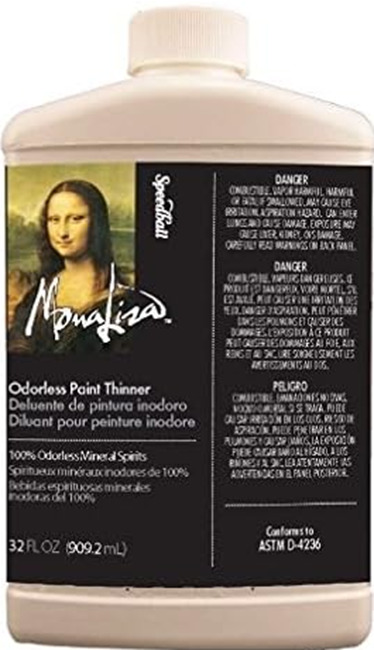
Key Features:
- Weight – 1.7 Pounds.
- Form – Aerosol.
- Volume – 32 Fluid Ounces.
- Finish Type – Matte.
Overview:
Are you an artist looking for a great brush and accessories cleaner?
The Mona Lisa Odorless Paint Thinner is the perfect solution for thinning acrylic paint without any unpleasant odors.
Plus, it comes in a 32-ounce bottle so you can use it multiple times before needing to buy more.
And with its combustible warning label, you know that this product is safe and reliable when used properly.
With Mona Lisa Odorless Paint Thinner, your acrylic paint brushes will be clean and ready for your next masterpiece in no time.
You won’t have to worry about strong odors or fumes while using it either – making painting even easier and more enjoyable.
User Experience:
The Mona Lisa Odorless Paint Thinner is a great product for those looking to thin out their acrylic paints without breaking the bank.
It is known for its mixability, odorless nature, and reasonable price point, making it ideal for those looking to reduce oil paints for airbrushing.
However, users report that it is not as effective at cleaning up surfaces as Terpenoid, and takes longer to dry.
Some users also report that it can leave a feeling of oil residue on their skin if they get it on them, which may be a deal breaker for some.
It's also known for not thinning the paint out as well as Terpenoid would, meaning you may need to use more product than you would normally.
Pros
- Great for mixing.
- Odorless.
- Good price.
- Works well to reduce oil paints for airbrushing.
Cons
- Doesn't seem to thin out the paint as well as Terpenoid.
Overall Thoughts:
All in all, the Mona Lisa Odorless Paint Thinner is a great option if you're looking for an affordable paint thinner and don't mind having slightly different results from what you'd get with Terpenoid. It's worth giving it a try to see for yourself if it meets your needs.
Get started with the Mona Lisa Odorless Paint Thinner.
Best Binder for Acrylic Paint
5. PEBEO STUDIO Acrylic Binder (Transparent)
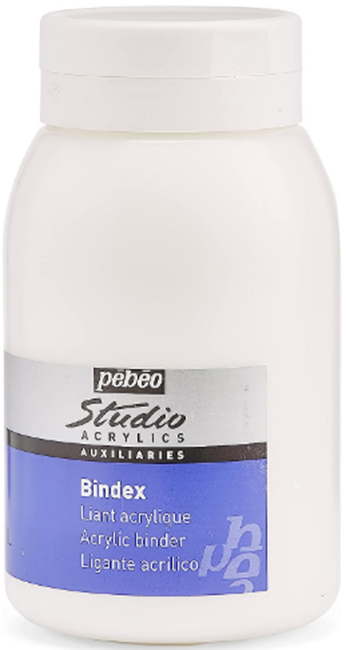
Key Features:
- Paint Type – Acrylic.
- Finish Type – Gloss.
- Weight – 2.48 Pounds.
- Coverage – Translucent.
- Color Code – Transparent.
- Form – Bottle.
- Specific Use – Painting.
- Volume – 1,000 ml.
Overview:
Are you looking for a way to add depth and brightness to your acrylic paintings?
Introducing PEBEO Studio Transparent Acrylic Binder, the perfect solution for collages, inlays, and color dilutions.
This non-yellowing liquid binder will give your colors smoothness and luminosity when used in dilutions.
When mixed with water, it can also be used as a retouching varnish. It has a flexible glossy film that is translucent and indelible once dry.
With this product, you can widen the realm of creative possibilities when painting with Studio Acrylics High Viscosity colors or use it in Mixed Media applications to further expand creative possibilities.
Available in 100 ml, 250 ml tubes, 500 ml jars, or 1 L jars so there’s something for everyone.
User Experience:
The PEBEO STUDIO Acrylic Binder is an excellent product for thinning and diluting paints, especially acrylic paints.
It provides excellent coverage and soaks into the fabric of canvas giving smoother results.
The binder produces results similar to popular brands such as Liquitex or Owatrol. It also works well with other materials to create unique ‘paints' and it holds everything together nicely.
The binder can be applied onto hardboard and paper smoothly and easily with drying times that are reasonable.
Cleaning up is no different than a normal acrylic solution.
In fact, customers have been so pleased that they have gone back to buy more because it really is an impressive product.
Pros
- Excellent job of diluting paint.
- Can be added to materials like crushed charcoal and crushed dirt to make your own “paints” and it holds everything together nicely.
- Paints well onto hardboard and paper.
- Goes on top of layers of acrylic smoothly & easily.
- Reasonable drying times.
Cons
- None Identified.
Overall Thoughts:
In a nutshell, the PEBEO Studio Acrylic Binder for diluting colors is an excellent product for artists. It has a great consistency and provides coverage to raw canvas, hardboard, and paper alike.
Moreover, it can be used in combination with materials like crushed dirt and charcoal to make your own paint.
The drying times are reasonable and cleanup is a breeze.
Highly recommended for any person looking for an affordable option.
Get started with the PEBEO Studio Acrylic Binder.
What Does Thinning Acrylic Paint Mean?
Thinning acrylic paint means changing its texture by mixing it with other materials.
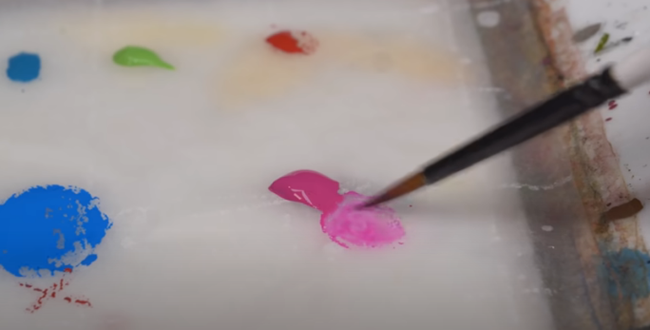
This can be done for different reasons, such as creating a more fluid or thinner consistency, reducing the viscosity of the paint, or adding interesting effects and textures to your artwork.
Water is typically used to thin out acrylic paint, but there are also other materials that can be used, such as acrylics, paint thinners, and more.
No matter what you are painting – from canvas paintings to murals – understanding how to thin out acrylic paint is an essential skill for any artist.
Do Acrylic Paints Need to Be Thinned?
Acrylic paints are known for their versatility and durability, making them a popular choice among artists.
However, they may need to be thinned in some cases in order to achieve the desired result.
Thinning acrylic paint can help achieve different consistencies, colors, or effects that might not be achievable with the original paint.
What Is the Best Way to Dilute Acrylic Paint?
When diluting acrylic paint, it is important to use the right materials and techniques to ensure a successful end result.
The best way to dilute acrylic paint is to start with a small amount of water and gradually increase the water volume until you achieve the desired consistency.
When adding water, use filtered or distilled water in order to prevent any impurities from affecting your paint.
In order to make acrylic paint thinner, you can use products like flow Aids, fluid additives, or acrylic flow enhancers to help with the process.
It is also important to use a clean brush and work steadily when diluting your paint so that it mixes evenly and smoothly.
Guiding Principles on How to Make Acrylic Paint Thinner with Thinning Mediums
When thinning acrylic paint, it is important to choose a medium that is right for your project.
One of the most common types of acrylic paint mediums is water-based solvents. These solvents can be found at almost any art supply or craft store and are relatively inexpensive.
Depending on the type of painting you are doing, you may need to adjust the ratio of the solvent and paint for optimal performance.
Other materials that can be used to thin acrylic paints include mineral spirits, turpentine, and linseed oil. These mediums can be mixed with your paint to create a thinner consistency.
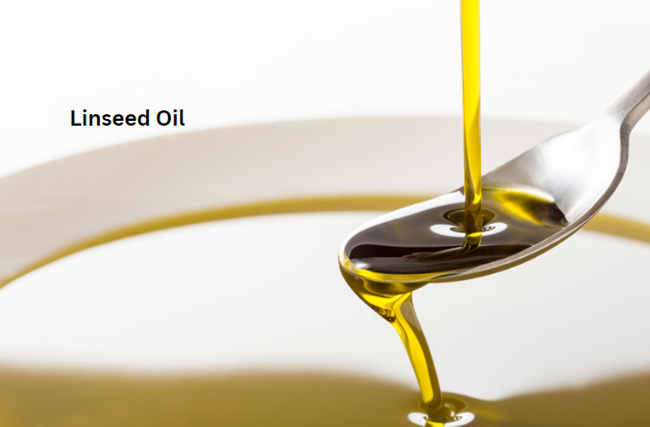
The exact proportions of each material should be determined by the type of paint and the desired thinning effect.
If a project requires more than just slight thinning, it may be necessary to go with a medium that is designed specifically for this purpose.
Thinning acrylic paints can also be achieved without any additional materials.
Adding water directly to the paint allows you to create different consistencies and textures depending on the amount of water used.
Mixing in small amounts of water will thin the paint out and make it easier to spread while adding more water can create a wash effect.
How to Thin Acrylic Paint with an Acrylic Binder Medium
It is important to mix the mixture properly to achieve the desired result when you are thinning acrylic paint with a binder.
To begin, select the appropriate binder and add it to the acrylic paint in small amounts, gradually increasing until you reach the desired consistency.
It's important to take note of how much binder you have added; adding too much can make the paint dry too quickly and affect its thickness.
Once you have achieved the desired consistency, allow your mixture to sit for a few minutes before use.
This is how you thin acrylic paint with an acrylic binder medium.
Keep in mind that this method works best when combined with other methods such as adding a bit of water or increasing the amount of paint.
How Do You Make Homemade Paint Thinner?
A homemade paint thinner can be made with a variety of different ingredients, depending on the type of paint being used.
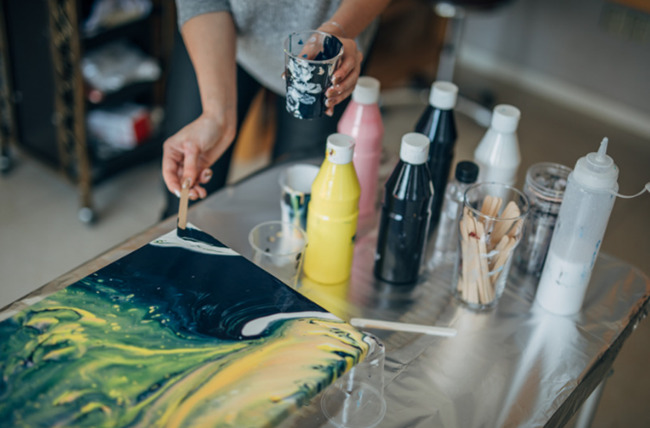
For water-based acrylic paints, rubbing alcohol is often the preferred choice as it is cheap and readily available.
However, it is important to note that not all rubbing alcohols are suitable for use in thinning paint; only isopropyl alcohol should be used.
Additionally, you must not exceed 15% of the alcoholic content when thinning your acrylics as this could cause them to become too thin and difficult to work with.
For oil-based paints, mineral spirits are often the preferred choice for homemade paint thinner.
This can be found in most hardware stores and is quite easy to use; simply add a small amount of mineral spirits to the paint until you achieve the desired consistency.
Be sure not to add too much, however, as this could result in overly thinned acrylic paint.
Another great option for homemade paint thinner is white spirit. This can be used on both water-based and oil-based paints, however, it is important to note that white spirit must be used sparingly.
Too much can cause the paint to become clumpy and difficult to work with.
What Is the Cheapest Way to Thin Acrylic Paint?
Thinning acrylic paint is a necessary step in creating beautiful artwork. There are many ways to thin acrylic paint, however, the most cost-effective method is to use water.
FAQs
Do You Mix Acrylic Paint with Thinner?
The question of whether or not acrylic paint should be mixed with thinner is a source of debate among artists. While some may favor mixing the two, others may disagree.
On one hand, mixing acrylic paint with thinner can result in a smoother consistency and make it easier to work with.
Additionally, thinning the paint allows for more precise brush control, creating better-finished pieces.
However, thinning the paint can also result in a weaker and less vibrant color due to the pigment particles being dispersed through the thinner.
On the other hand, many artists argue that acrylic paint should not be mixed with a thinner due to its already fluid nature. They suggest that more precise control can be achieved by adjusting the pressure, direction, and speed of brush strokes.
Ultimately, it’s up to you to decide if mixing acrylic paint with a thinner is something you want to do for your own artwork.
Can You Thin out Acrylic Paint with Water?
Acrylic paint is a popular choice of painting medium for its versatility and durability. It is typically composed of pigment, binder, and a water-based emulsion.
There are some acrylic paints that are designed to be thinned out with water, however, it is important to pay attention to the instructions on the label as different brands of acrylic paint may require different thinning methods.
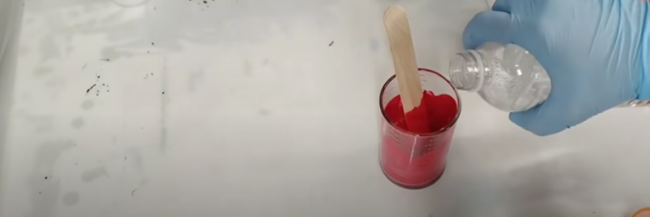
Does the Water Used to Thin Acrylic Paint Need to Be Distilled Water?
Distilled water is a necessary ingredient when it comes to thinning acrylic paint. Acrylic paints are water-soluble, which means that they can be thinned and manipulated with the addition of water.
The main reason why distilled water is preferred as a thinner for acrylic paint is because it does not contain dissolved minerals or other impurities that can be found in tap and other forms of water.
This means that the paint will maintain its vibrancy and texture, without any grainy film being left behind.
What to Do If Acrylic Paint Is Too Thick?
Acrylic paint is a versatile medium that can be used for a variety of artistic and craft projects. However, if the paint is too thick, it can be difficult to work with and may become unworkable.
To fix this issue, there are several things you can do.
First, you should try thinning out the paint with water. Start by adding a few drops of water at a time and mix thoroughly until you achieve the desired consistency. You may need to add more depending on how thick the paint is.
If you find that the acrylic paint is still too thick, try tapping your paintbrush in warm water before applying it to your project. This will help reduce the viscosity of the paint and make it easier to apply.
Finally, if all else fails, you can always add more paint to your project. Just be sure to mix thoroughly and add only as much as necessary in order to prevent your piece from becoming too goopy or runny.
Can You Thin Acrylic Paint with Isopropyl Alcohol?
Isopropyl alcohol, or rubbing alcohol, is a commonly used tool to thin acrylic paint. It helps the paint to become more fluid and easier to apply.
Acrylic paint can be thinned with up to 20% alcohol, but this should not be done without proper testing as too much alcohol can cause the paint to become brittle and crack as it dries.
Some artists prefer to use a combination of water and alcohol, but this can cause the paint's adhesive properties to break down.
Can You Thin Acrylic Paint Using Acetone?
Acetone is a versatile solvent that can be used to thin out acrylic paint, but it has its limitations.

Acetone will cause the paint to become more fluid and easier to spread, but it can also weaken the adhesive qualities of the paint. This means that if you use acetone when painting with acrylics on canvas or other surfaces, you may find that the paint fades or rubs off over time.
It's still possible to use acetone to thin out acrylic paint – just make sure you only use it in moderation and in a ratio of 4:1. That means four parts paint and one part solvent, such as a mix of turpentine and acetone.
This will help to reduce the amount of damage done to the adhesive qualities of your paint and preserve its longevity.
Can You Use Hair Spray to Thin Acrylic Paints?
Some people may be tempted to use hair spray as a means of thinning such paints, but this is not recommended.
Hair sprays contain a variety of chemicals and alcohol which may react with the acrylic paint causing it to become too thin or have an uneven consistency. It can also cause the paint to smudge on brushes or canvas surfaces, creating a mess.
Additionally, when mixed together, there is a risk of chemical reactions, which can be dangerous.
The better option is to use water-based thinners, as they are specifically designed for thinning acrylic paints.
Can You Use Nail Polish Remover to Thin Acrylic Paint?
Nail polish remover is a common household item that many people use to remove their nail polish and manicures. However, it can also be used to thin acrylic paint.
While this method of thinning acrylic paint is not recommended by experts, it is an option for those who are in a pinch and don't have any other type of thinning agent on hand.
It is important to keep in mind that the chemicals in nail polish remover can have a damaging effect on both your paint and your brushes. This means it should only be used as an absolute last resort, and even then you should use it sparingly.
Additionally, always make sure you properly ventilate any area you are using nail polish remover in, as the fumes can be harmful.
Conclusion
We hope this article has given you some insight into the best acrylic paint thinner for your needs.
Whether you’re looking to thin down a particular color or just want to ensure that your paints remain workable, there are several options available depending on what works best for your project.
Remember, not all diluting agents will be suitable for every type of painting medium and it is best practice to test any new material before use.
With these tips in mind, we wish you luck with finding the perfect solution when it comes time to thin down your acrylics.



